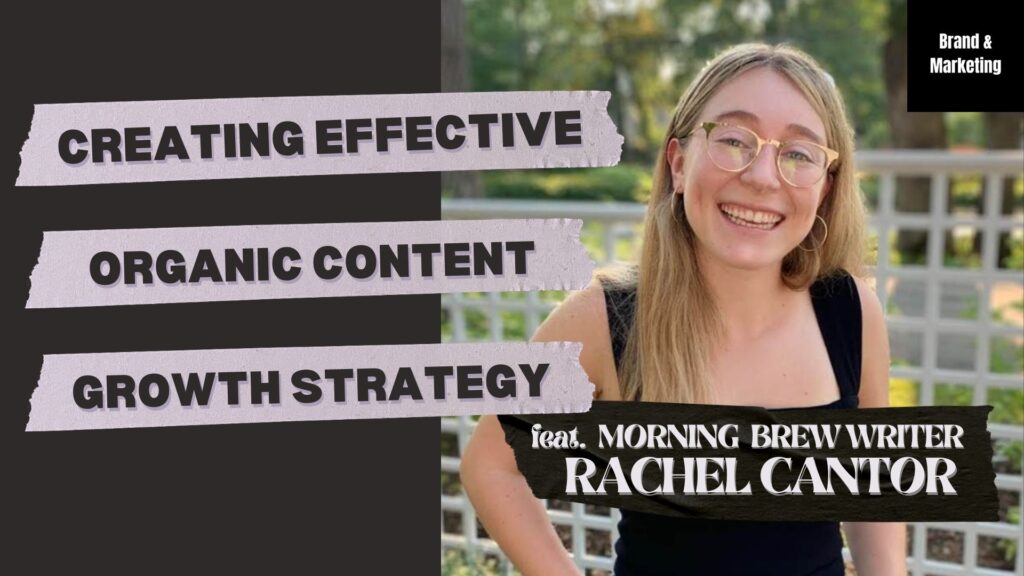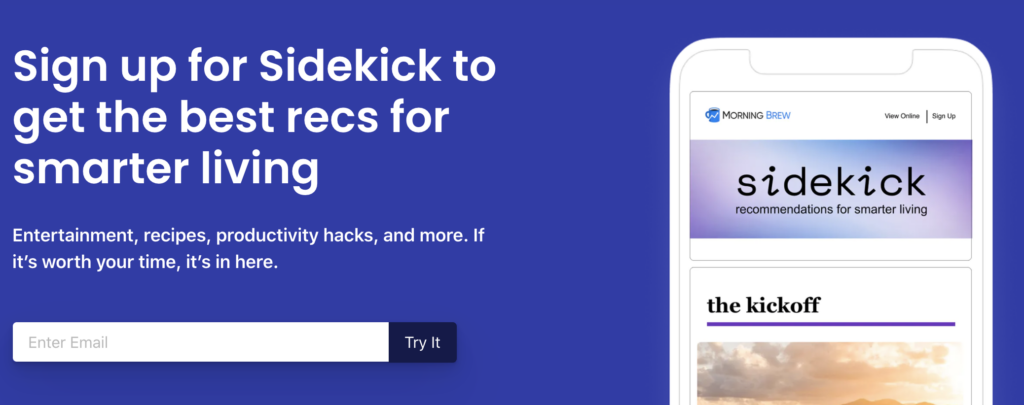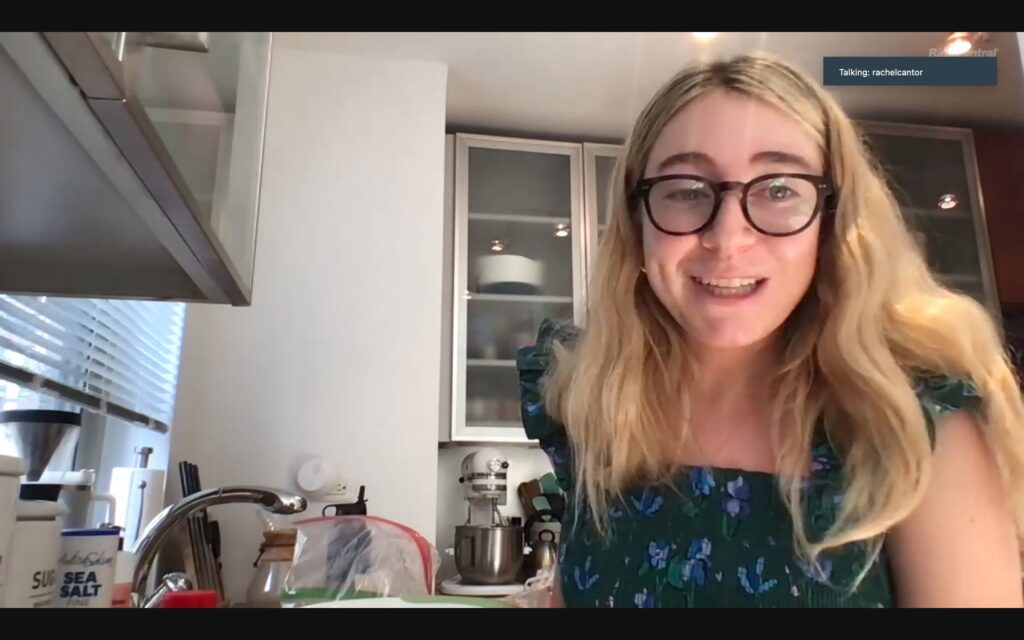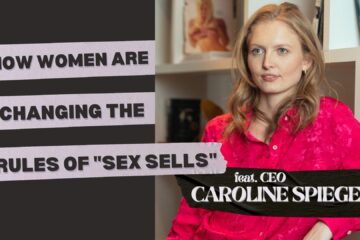
Talking Organic Growth Strategy for Content & Brand with Morning Brew Writer Rachel Cantor

Writer and content expert Rachel Cantor knows a lot about how to drive organic growth.
Her personal newsletter gained enough traction to capture the attention of the Morning Brew, that boasts a portfolio of newsletters with over 3 million total subscribers.
She shared some of her own experiences that led to joining the Morning Brew catalog with her own newsletter, Sidekick. And she offered plenty of other thoughts on content strategy, organic growth, community building and more.
Related Content: 7 Super Creative Marketing Tactics (with Examples!)

1. I saw the thread where you go into how you went from your personal newsletter to creating Sidekick as an offshoot of Morning Brew, one of the most successful email newsletters today.
So let’s start from the beginning. What led you to create a newsletter to start?
My personal newsletter? Well, I started it right around April 2020.
I graduated early from Northwestern, and I was in the middle of figuring out what I wanted to do after school.
I’ve always loved writing, and I’ve always been that go-to friend for recommendations — podcasts, Chicago restaurants, new DTC brands. I wanted to centralize what I was reading, watching, and following in one place and share those suggestions with people. I thought maybe it would put a smile on their face during dark times.
I’ve also always been an avid journaler, so I wanted to share some of the things I was grappling with as a new grad during the pandemic with a larger group of people.
I didn’t think my newsletter would lead to my full-time job!
It was a passion project and a way for me to express myself.
I didn’t even have a formal name for my newsletter. It was just a curation of me, and I ended up sticking with it and writing it every single week.
2. What were the growth strategies that worked for you to expand your audience? And how have you applied those early lessons to what you’re still doing now?

It was 100% organic growth.
When I first launched my newsletter, I posted about it on all my social media channels.
I gained a ton of followers from Instagram. I don’t have a big following on the gram, but I think my content just hit at the right time. People were actively looking for ways to keep busy.
In my network, I’ve always been known as curious and a go-getter. I think people wanted to know what I had to say, what I was learning throughout the pandemic, and what trends I was seeing.
My newsletter spread through word of mouth and some other people posting about it on their own social channels.
I was a part of a student startup space at Northwestern called The Garage, and they posted about it on LinkedIn, which is how I got my first-ever freelance project. I also hosted workshops for student groups on starting a newsletter and on topics such as entrepreneurial endurance.
Everything kind of changed once I started posting consistently about my newsletter on Instagram.
At first, I thought posting about my own work was show-off-y or selfish. But then I had this conversation with a friend of mine, Jessica Keys, where she completely reframed my view of self-promotion.
She helped me realize that sharing and promoting my own content wasn’t selfish.
What I was building and creating was actually creating value for others and not sharing it would be a missed opportunity.
So then I designed these templatized Instagram Story graphics and started posting those every week and tagging brands in the posts. And I grew my audience significantly from there.
In terms of how I apply that now, I always tell people to put their work out there.
It doesn’t need to be perfect or the final iteration of your product. It’s just about getting your content in front of people, asking for feedback, and continuing to iterate and improve your work.
I’m very much a perfectionist, so it can be scary to put a rough draft or first iteration of your content into the world, but once you do it, you learn so much and you get over that hump.
At the Brew, we’re not afraid to take risks and try new things. We’ve changed the format of Sidekick a few times. And every time we change it, we always learn something new and grow from it.
3. I’ve found consistency to be one of my biggest content creation challenges. Do you have any tips or tricks for beating that?
Oof, consistency is hard!
Set deadlines and hold yourself to them.
I know that’s easier said than done, but pick a day to push out your content and commit to that. If you don’t, you’ll keep procrastinating and never get your work out there.
And remind yourself that it takes time to see results.
You probably won’t go viral right when you hit publish, but that’s ok!
It takes building a consistent practice to see results. You never know what opportunities will come your way. It just takes time.
4. One of the fun things about all of the Morning Brew brands is how much personality they showcase. How have you translated your personal brand to fit well under the Morning Brew umbrella with Sidekick?
Sidekick has a ton of personality, and that’s one of my favorite parts of the newsletter.
The tone is very friendly, witty, snappy, and in the know. It’s very human.
I feel like there are a lot of similarities between the days of writing my personal newsletter and writing Sidekick. It’s been a pretty natural fit!
What’s really amazing is that Morning Brew has empowered me to build my own brand online, as well as through Sidekick. I’ve loved connecting with readers and meeting people in the startup/media/DTC space.
5. You also recently created Oddly Specific, which looks to help people make new friends by organizing new, shared experiences. It’s basically an IRL community builder. What’s the story there?
I started Oddly Specific with a Morning Brew colleague, Kyle Hagge.
We’re both born and bred Midwesterners, who recently moved to NYC not knowing many people here.
It’s really hard to make new friends as an adult. We both knew that from our own experiences but we also heard that from friends and acquaintances.
Kyle and I have been to our fair share of happy hours and rooftop networking events.
We both believe that when people connect in oddly specific ways, they’re more likely to feel that spark that leads to a lasting friendship.
We hosted our first Oddly Specific event last month. It was called Stoop & Sip!
We created groups of 3-5 people and sent them to random stoops in NYC to connect and chat in an oddly specific way. We had ten stoops in Manhattan and three stoops in Brooklyn.
There were about 85 people total, and we even had a few amazing brand partners, such as Luna Bay Booch, Hiyo, Onda, and Casa Verde Salsa. It was a big success.
Kyle and I are already thinking about our next event. We’re pretty excited. It’s been a fun project—connecting people and making cool shit happen across NYC.
6. Any final tips for people looking to find their voice in their own content, whether that’s a newsletter or some other channel?
Remind yourself that it takes time. You might not hit your stride immediately, and that’s totally okay. Don’t be so hard on yourself. Just keep at it.
Learn from others.
Read your favorite authors, and write down your favorite lines or any phrases that resonate with you.
Listen to podcasts and watch YouTube.
Scroll through Twitter.
There’s so much amazing free advice on the Internet!
Read another post: Talking Brand, Growth Strategy & Sex with Tech CEO Caroline Spiegel
Interested in getting more content like this? Sign up for my newsletter or subscribe to the Brand & Marketing YouTube channel and get fresh insight delivered to you weekly.


